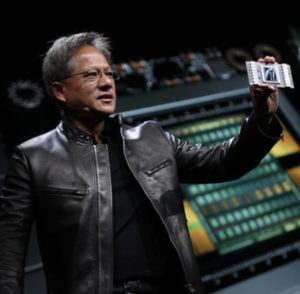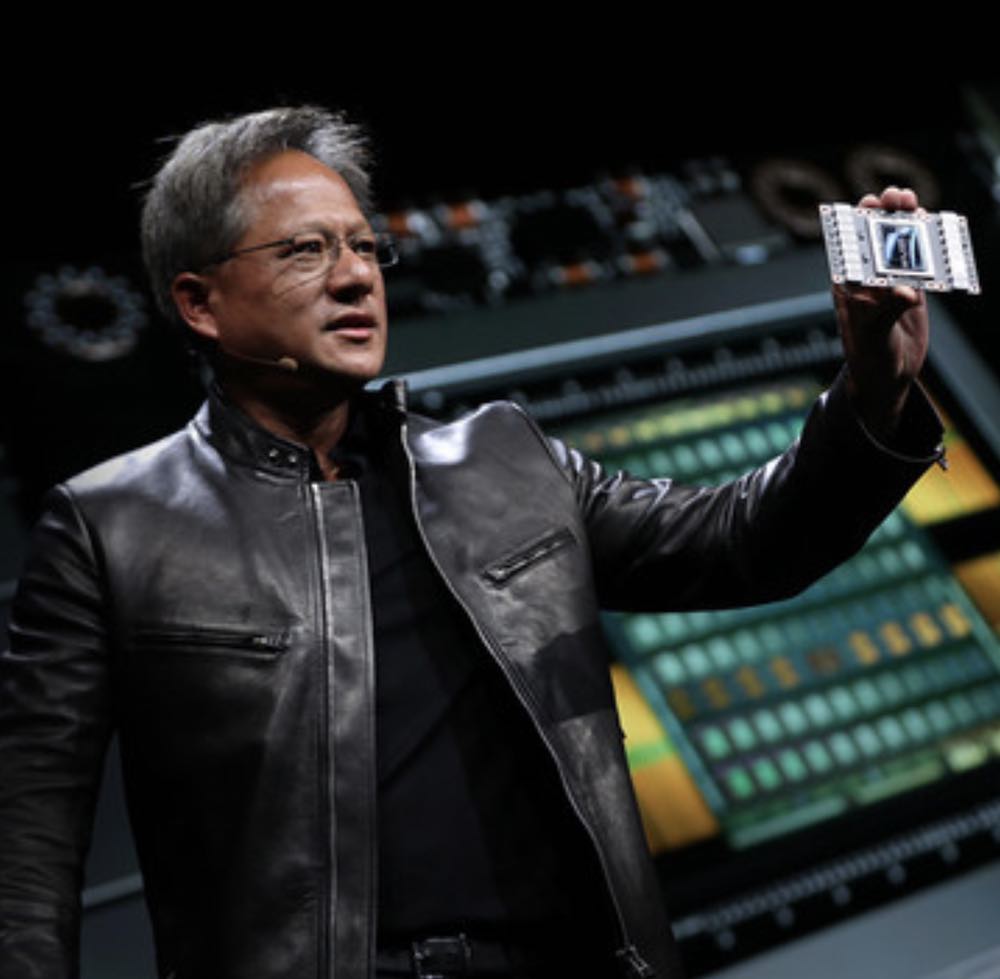 We are excited to bring our readers this special livestream from NVIDIA at SC17 in Denver. Tune in right here for a live presentation from NVIDIA CEO Jensen Huang entitled, “Accelerated Computing: The Path Forward.”
We are excited to bring our readers this special livestream from NVIDIA at SC17 in Denver. Tune in right here for a live presentation from NVIDIA CEO Jensen Huang entitled, “Accelerated Computing: The Path Forward.”
Date: Nov 13, 2017
Time: 3:00pm Mountain time
Today NVIDIA announced the world’s most advanced data center GPU — the NVIDIA Tesla V100 GPU based on NVIDIA’s Volta architecture — is available through every major computer maker and chosen by every major cloud to deliver artificial intelligence and high performance computing.
Dell EMC, Hewlett Packard Enterprise, Huawei, IBM and Lenovo have all announced Volta-based offerings for their customers. Providers such as Alibaba Cloud, Amazon Web Services, Baidu Cloud, Microsoft Azure, Oracle Cloud and Tencent Cloud have also announced Volta-based cloud services.
Building on this breadth of offerings, NVIDIA has introduced new software and tools on the NVIDIA GPU Cloud (NGC) container registry that make it easy for scientists to deploy NVIDIA’s accelerated computing platform for compute-intensive research.
NVIDIA shared the news at the SC17, where dozens of computer makers and cloud service providers launched a wide range of Volta-based products and services.
Volta is the world’s most powerful platform for AI and HPC, and will allow the world’s top minds in scientific research to push the limit on what’s possible in areas like drug discovery, alternative fuel sources and predicting natural disasters,” said Jensen Huang, founder and chief executive officer of NVIDIA. “With Volta now in data centers and clouds around the world, a new wave of innovation is underway that will have an incredible impact across society.”
NVIDIA GPU Cloud Adds HPC Containers
More than 500 HPC applications, including the industry’s most widely used, incorporate GPU acceleration. However, one of the biggest challenges facing scientists who want to take advantage of these applications is the complexity of deployment.
NVIDIA’s new containers for scientific computing applications and for HPC visualization tools provide access to some of the most widely used GPU-optimized HPC software. They join the GPU-optimized AI frameworks and deep learning applications the company introduced in the NGC container registry last month.
Together, the offerings make NGC a single source for researchers seeking to easy access, at no charge, to the AI frameworks, HPC applications and visualization tools essential for their scientific workflows.
With NGC, scientists and researchers can focus on discovery rather than setting up and deploying scientific computing applications, and the time-consuming challenges of installing complex, resource-intensive software and updates. The GPU-optimized HPC containers on NGC transform this cumbersome chore, which can take days or weeks to complete, into a simple task that requires only a few minutes.
The HPC application containers encompass several popular third-party scientific applications, including GAMESS, GROMACS, LAMMPS, NAMD and RELION.
The HPC visualization containers now available in beta on NGC feature the industry’s leading visualization tools, including ParaView with NVIDIA IndeX volume renderer, NVIDIA Optix ray-tracing library and NVIDIA Holodeck for interactive real-time visualization and high-quality visuals.
The complete set of GPU-accelerated deep learning, HPC application and HPC visualization containers are available to users at no charge from the NGC container registry. Simply sign up for an NGC account. The HPC containers can run on any NVIDIA Pascal and later generation NVIDIA GPU-accelerated system, including local workstations, NVIDIA DGX systems and HPC supercomputing clusters.
More information about NGC is available at www.nvidia.com/gpu-cloud.




